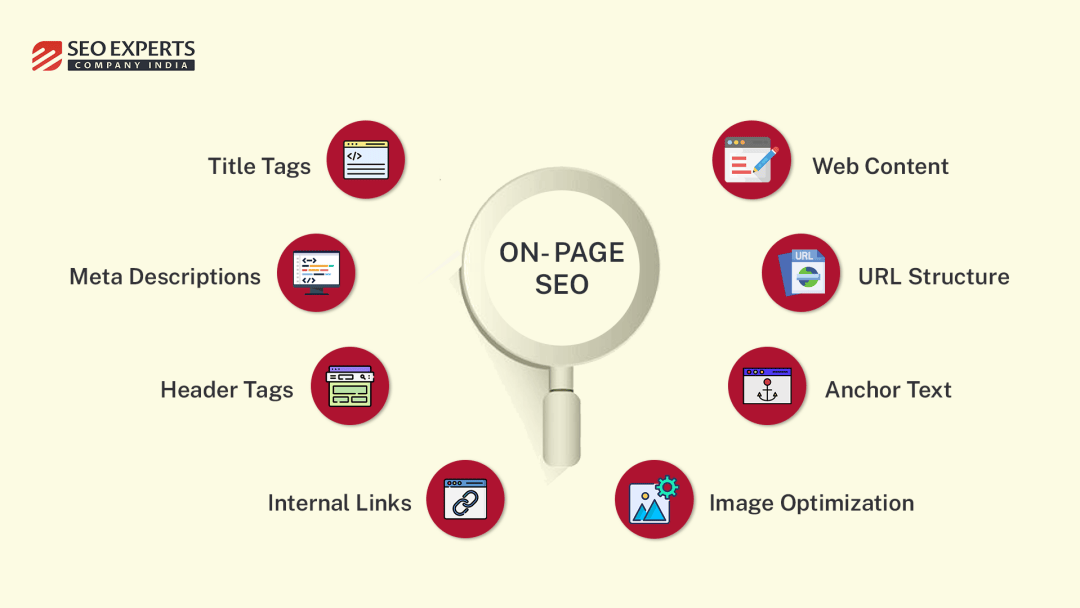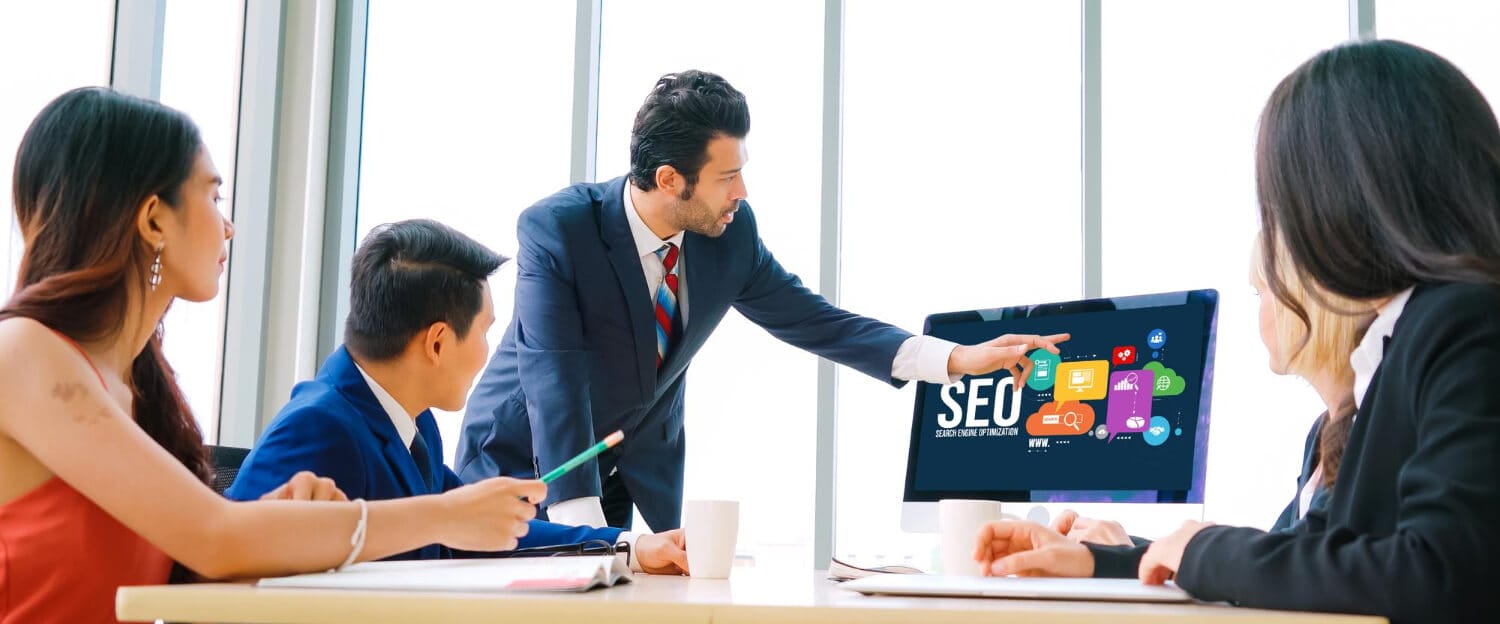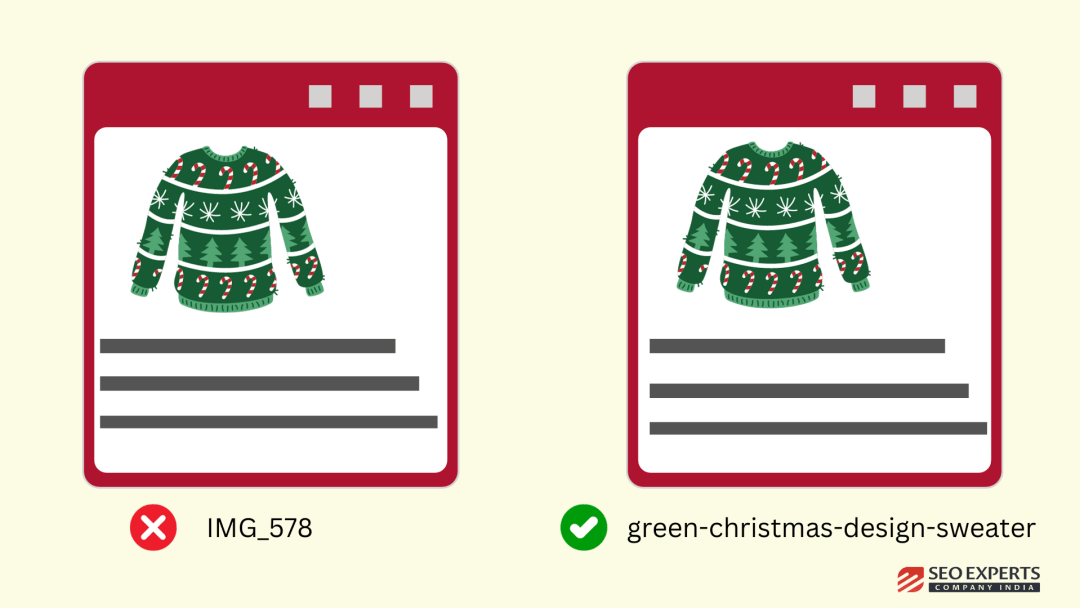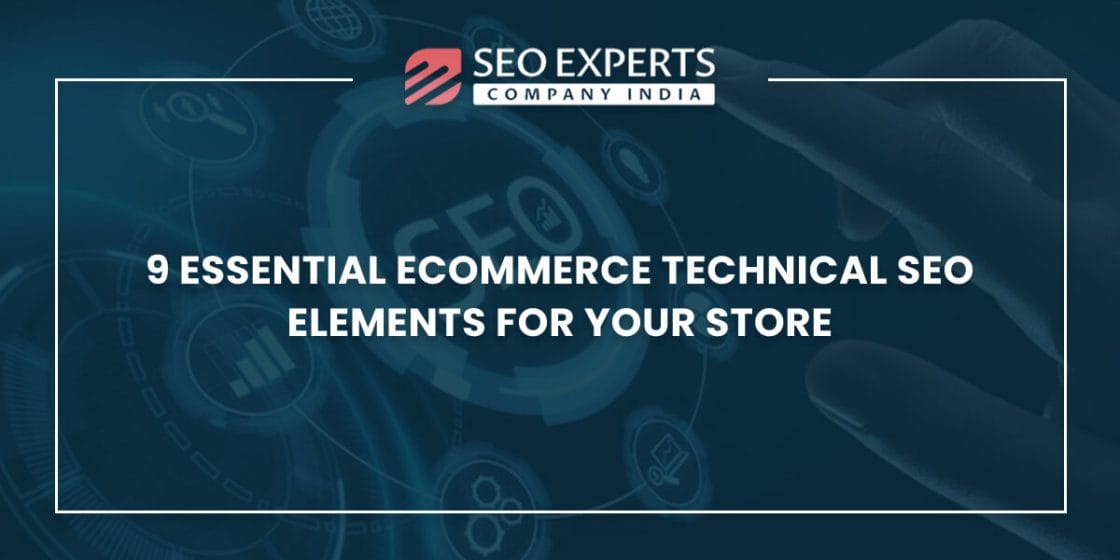On-page SEO involves optimizing individual web pages to rank higher and attract relevant traffic. From optimizing meta tags and content to providing seamless user experiences, each on-page element plays a crucial role in getting search engines notice your site and bring more visitors.
Over the past decade, we have seen SEO evolve from a keyword-centric game to giving users exactly what they want, considering site usability, mobile optimization, user intent, and more. In this blog, we will share insights and tips learned through years of navigating algorithm updates, content shifts, and user behavior changes.
Let’s dive into the article to learn tried and tested on-page SEO strategies that will not only help your website climb up the search engine rankings but also engage your audience.
What is On-Page SEO?
On-page SEO, sometimes called “on-site SEO,” refers to making changes to your website or on-page elements. The process includes optimizing title tags, meta descriptions, web content, internal links, anchor text, URLs, and more to rank higher in search engine result pages.
It is called on-page SEO because any changes you make will be visible to the visitors on your page (while this is usually not the case with off-page SEO).

Why is On-page SEO So Important?
On-page SEO makes it easy for search engines to find, crawl, and index your website and understand its relevancy to the searcher’s query. Additionally, on-page optimization helps your website in the following ways:
- Boosts organic website traffic.
- Higher search engine rankings.
- Improves local visibility and reach.
- Better conversion rates.
- Improves CTR.
- Optimizes your website for visitors and search engine bots.
Implement these Proven Tips for On-Page SEO Today (lessons learned from our success)
Anything you change or tweak on your website that is clearly visible to the users comes under on-page SEO. Being in the SEO industry for more than 12 years has made one thing very evident, “what is seen is sold.” So, to attract users to your website and impress the search engines, you need to ace up your on-page SEO strategies.
During our long journey, we have assisted numerous clients in their search engine optimization process, whether on-page, off-page, or technical SEO.
We completely understand that website optimization involves a lot of effort and diverse factors. To make things easier, we are sharing some valuable on-page SEO insights and tips that you must follow in order to boost website traffic and deliver search results that meet users’ needs.
Title Tags
A title tag is basically a clickable HTML tag that can be viewed in the head section of each website page. It provides initial information about the page and is often displayed in search engine result pages and the browser window.
Sharing some expert tips that will help you optimize title tags for on-page SEO:
- Target Keyword: Ensure that the title tag includes your target keyword and is compelling enough for a user to click on it. (While writing title tags for our clients, we focus on including power words to draw the reader’s attention.)
- Numbers Magic: Based on our experience, we can say that readers are more attracted to numbers. Therefore, we advise you to use numbers in the title tag.

- Use Questions: Turn your titles into questions that grab attention! For instance, while assisting a client targeting the keyword ‘leather handbags,’ we rephrased the title to “Are you cleaning your leather handbag the right way?” This approach boosted the clicks as it directly addressed the reader’s question.
- Power up with modifiers: We suggest you to use modifiers such as “best practices,” “review,” “checklist,” “complete guide,” etc. in the title tags to rank for long tail keywords.
- User Intent Wins: One very important lesson we have learned through our journey is to always consider the users’ search intent while writing and optimizing the title tag. A title that provides instant solutions to users’ queries earns greater clicks.
- 60-character rule: Write unique titles for each page and try to stay within 60 characters while writing an optimized title tag.
Meta Descriptions
The meta description is an HTML tag that can be set for a page or post on the website. It is present right below the title tags in the search engine result pages. Meta descriptions practically sum up the whole content of the page to attract users. We believe this snippet plays a vital role in attracting clicks and setting user expectations.
If your meta description is optimized and effectively summarizes your content, more people will want to click and read your blog post.
Sharing key takeaways that we have learned through years of working with numerous clients:
- Try to wrap up your meta description in around 155 words.
- Include your focus or target keyword in the meta description.
- Avoid alphanumeric such as “–, &, or +” in the meta description.
- Ensure that the meta description matches the webpage content.
- Write accurate and unique meta descriptions for each page on the website.
Header Tags
Header tags or Heading elements help deliver structured content by separating headings and subheadings on a webpage. These tags help the readers and search engines quickly find and understand the most important parts of your content based on the search intent.
To summarize in a single line, header tags improve the content readability and have a top-down hierarchy, ranking in importance from H1 to H6.
- H1 tags denote the title or central theme of the content (we recommend using only a “single” H1 tag).
- H2 and H3 tags are used to denote the headings and subheadings.
- H4, H5, and H6 tags denote the subsections used to streamline the content further.
Follow our approach to optimizing header tags that boosts our clients’ visibility and drives them clicks:
- As recommended, we always use a “single H1 tag.”
- We optimize the H1 tag to match the search intent of the users.
- We prefer including (not stuffing) keywords in the header tags.
- We put effort into writing catchy headline tags to attract users. For instance, our approach includes using Q&A-style headers to help users acknowledge that the content addresses their main questions.
- We ensure that the content matches the heading in each section.
Page URLs
URL or Uniform Resource Locator is a unique identifier that we put into the search engines to access the page. Page URLs allow the readers and the search engines to understand the context of your content.
It is safe to say that simple and easy-to-read URLs with the target keyword persuade users to click the link.
For instance, in general, a person looking for information on SEO audit would prefer to click on the URL “https://xyz.com/seo-audit” rather than the URL “https://xyz.com/index.php?id_w=725%jylp.”
Example of an optimized URL
Follow our expert tips to optimize page URLs for on-page SEO:
- Smoothly insert your keyword in the URL structure and keep it short and crisp.
- Use hyphens between the words to separate them.
- Always use HTTP‘S’, the secure version of the HTTP protocol.
Image Optimization
Images and visuals make the article look more appealing, as people are likely to better retain the information conveyed visually. In our understanding, image optimization is an important SEO factor that can significantly impact search engine rankings.
Our advice on optimizing images for on-page SEO:
- Choose the correct image format: Selecting the suitable image format is very important. We personally use JPEG format for all kinds of colorful images and PNG format for screenshots.
- Check the file size: We compress the file size (whenever needed) as it helps improve the page load speed. We mainly use Adobe Photoshop and JPEG Optimizer to compress images.
- Add relevant images: The image that you add must be relevant. We always double-check if the image matches the content and makes sense to the reader.
- Mobile friendliness: Add responsive images that can be viewed across all screen sizes. We strongly advise you to verify if your image is mobile-friendly.
- Add descriptive alt text: Alt text is the text that helps search engine crawlers understand your image’s context and provides accessibility for users with visual impairments. Alt text should be descriptive, short, and relevant for each and every image. We further advise against stuffing alt text with keywords as it can make the website feel spammy and create a bad experience for users.
SEO-Optimized Website Content
“Content is king” remains true in the case of on-page SEO as well. Optimized, informational, and unique content is sure to make your website popular. “The content you deliver should add value to the readers’ lives” has been our motto since the beginning.
We always run a content gap analysis to identify topics the website misses out on and gain some popular and unique content ideas for our clients.
Sharing practiced tips to optimize website content for on-page SEO:
- Conduct thorough keyword research to curate content that matches the user’s search intent.
- Keep the content fresh and updated. Our personal observation says that updating the content with the latest information helps attract more website traffic.
- Add the latest strategies, data, reports, and tips to keep the users informed about new trends and technologies.
- Another thing we practice is adding expert tips and sharing first-hand experiences with the readers through the content. This makes the blog more valuable and descriptive.
- Add images, graphics, charts, screenshots of relevant research and news headlines, original reports, etc., to make the content more informative.
Internal Linking
Internal links connect one page on your website to another website page; that is why it is called internal linking. Internal links help search engines crawl, index and understand the pages on your website. Our experiences have taught us that this practice offers several advantages. It allows users to navigate through your website and keeps them glued to it for longer durations, ultimately increasing your rankings in the search results.
Sharing three important lessons that we practice for effective internal linking process:
- Always link the relevant pages.
- Choose your anchor text carefully and meticulously.
- Avoid using the same anchor text for two different pages.
Mobile Responsive Design
It is imperative for the website to be mobile responsive, as 53% of the total web traffic comes from mobile phones. Search engines like Google prioritize mobile-friendly websites in their rankings to provide a better user experience for mobile users. Therefore, optimizing your website design for mobile responsiveness, usability, and performance is an essential On-Page SEO element.
For instance, while performing SEO audit for a client that runs an HVAC business, we figured out their site was not mobile optimized. Our team immediately raced to fix it and implemented a mobile-friendly design to ensure seamless user experiences across devices of all sizes. The process involved adding responsive design elements, streamlined menus, and optimized content formatting for smaller screens. As a result, our client witnessed a remarkable surge in mobile traffic and improved rankings in mobile search results.
Surprisingly, there was a 19% increase in mobile conversions within two months post-optimization. This highlights how crucial mobile-friendliness is for on-page SEO, demonstrating its direct impact on user engagement, site traffic, and ultimately business growth.
How We Can Help You Power Up Your On-Page SEO Efforts
We hope that you now understand the importance of on-page SEO and how it helps you boost website traffic and improve your search engine rankings.
However, on-page SEO requires consistent efforts as you will be required to update your content, images, links, etc., to leverage complete benefits. If you want to save time and effort, you can get help from an expert SEO agency like ours.
Our skilled team has mastered on-page SEO strategies over the years. We pay attention to every tiny detail, right from optimizing title tags, meta descriptions, and website content to multimedia, images, and CTAs.
This is how we at SEO Experts Company India perform on-page SEO services to help your website receive organic traffic and achieve higher conversion rates.
Website Audit: We run a comprehensive website audit to review, identify, and analyze areas that require improvement, such as website content, HTML code, and on-page errors.
Title Tags: We optimize the title tags with target keywords, which helps improve the visibility and ranking of your website in the search engines.
Meta Descriptions: We summarize your content through compelling meta descriptions that help improve your website’s click through rate (CTR).
Header Tags: We optimize your header tags (H1, H2, H3, etc.) with relevant keywords in order to structure your content effectively, making it more reader-friendly and helping search engines understand your content’s organization.
Keyword Research and Optimization: We conduct extensive research to dig for relevant and high-impact keywords for your business. We further strategically incorporate these keywords into your content, meta descriptions, title tags, etc., to enhance your website’s visibility.
Content Strategy: Our team develops a robust content strategy and creates content to match the user’s search intent. We focus on creating high-quality, informative, and engaging content that glues the visitors to your website. Additionally, we regularly update your content keeping the changing user intent and trends in mind.
Image Optimization: We optimize the images and multimedia using the right image format and alt tags, providing a smooth user experience.
Internal Linking: We link relevant pages on your website to help the users and search engines smoothly navigate your site, increasing engagement and SEO effectiveness. (We also link your website to external sources whenever required, as this helps search engines determine the quality and usefulness of your website).
Schema Markup: We implement schema markup to help search engines understand and display information from your website more effectively.
Regular Reporting: We track the progress and provide regular updates on the on-page SEO efforts, including keyword ranking improvements, increased organic traffic, and user engagement metrics.
Let us help you improve your search engine rankings by assisting you with our exceptional on-page SEO services.
Get in touch with us for further information about our services.








